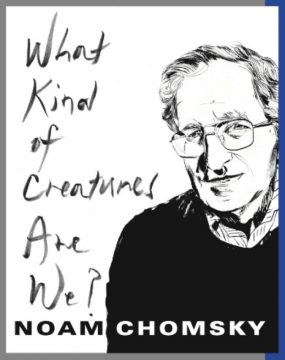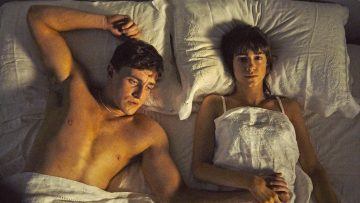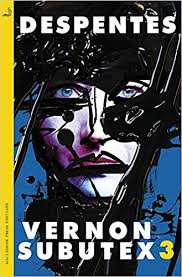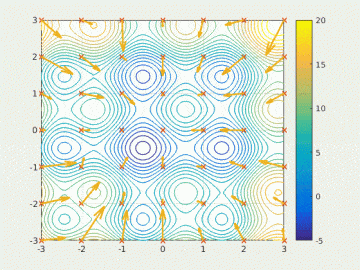Category: Recommended Reading
Why Do Authoritarians Win?
William E. Scheuerman in the Boston Review:
 Democracy seems in bad shape these days. In contrast, its global political rivals appear to be prospering and gaining confidence in their ability to offer a viable alternative. Commenting gleefully a few weeks after Donald Trump’s election, Vladimir Putin celebrated “the degradation of the idea of democracy in western society in the political sense of the word.” Su Changhe, a Chinese scholar who has praised his country’s successes under President-for-life Xi Jinping, offers approval that “Western democracy is already showing signs of decay.” Sheik Mohammed bin Rashid Al Maktoum, ruler of Dubai and United Arab Emirates (UAE) Prime Minister, hopes that his government will soon be “closer to its people, faster, better and more responsive” than western democracy. Since the UAE’s version of democracy is deeply rooted in local society, he claims, that dream is already being realized.
Democracy seems in bad shape these days. In contrast, its global political rivals appear to be prospering and gaining confidence in their ability to offer a viable alternative. Commenting gleefully a few weeks after Donald Trump’s election, Vladimir Putin celebrated “the degradation of the idea of democracy in western society in the political sense of the word.” Su Changhe, a Chinese scholar who has praised his country’s successes under President-for-life Xi Jinping, offers approval that “Western democracy is already showing signs of decay.” Sheik Mohammed bin Rashid Al Maktoum, ruler of Dubai and United Arab Emirates (UAE) Prime Minister, hopes that his government will soon be “closer to its people, faster, better and more responsive” than western democracy. Since the UAE’s version of democracy is deeply rooted in local society, he claims, that dream is already being realized.
Of course, autocrats always tout their achievements, or insist that their regimes rest on the will of the people. Even Nazi Germany claimed popular legitimacy, a racist and anti-Semitic Volks-sovereignty. Soviet apologists and fellow travelers labeled Stalin’s Eastern European vassal states “people’s democracies.” The contemporary narrative seems depressingly familiar. Even so, the specter of powerful autocratic states that parasitically mimic democracy, while in reality eviscerating its core, should alarm us. Are democracy’s rivals indeed gaining ground? And, what precisely is different this time?
More here.
Q&A: Idan Landau and Noam Chomsky on Skepticism
From the Columbia University Press blog:
 Idan Landau: This book develops many ideas and themes that your readers will recognize from your earlier works. Still, I sense a new, or at least a more pronounced thread of skepticism running through it—especially as regards the limits of human cognition. “Mysteriansim” is a form of skepticism, so it is no wonder that one encounters Hume in these pages much more often that one did in your earlier writings. I wonder about the roots of this shift: Is it a natural perspective one gains with old age (Ecclesiastes-style wisdom)? Or is it a well-directed response to the over-optimism you see in certain branches of theoretical cognitive science? Jerry Fodor, perhaps, has gone through a similar process of “disenchantment” with the prospects of the cognitive enterprise between his Modularity of Mind (1983) and The Mind Doesn’t Work That Way (2000). Certain things you say may strike some as a defeatist position, which cannot inspire truly groundbreaking work. After all, if we wouldn’t constantly try to push against our limits, how would we know where they are?
Idan Landau: This book develops many ideas and themes that your readers will recognize from your earlier works. Still, I sense a new, or at least a more pronounced thread of skepticism running through it—especially as regards the limits of human cognition. “Mysteriansim” is a form of skepticism, so it is no wonder that one encounters Hume in these pages much more often that one did in your earlier writings. I wonder about the roots of this shift: Is it a natural perspective one gains with old age (Ecclesiastes-style wisdom)? Or is it a well-directed response to the over-optimism you see in certain branches of theoretical cognitive science? Jerry Fodor, perhaps, has gone through a similar process of “disenchantment” with the prospects of the cognitive enterprise between his Modularity of Mind (1983) and The Mind Doesn’t Work That Way (2000). Certain things you say may strike some as a defeatist position, which cannot inspire truly groundbreaking work. After all, if we wouldn’t constantly try to push against our limits, how would we know where they are?
Noam Chomsky: We should certainly push against our limits, just as the sciences have done, with remarkable results, since lowering their aspirations as the import of Newton’s discoveries set in. What for me at least is the most important part of WKC is the first chapter: the review of work that has tried “to push against our limits.” The results discussed were not considered within the realm of possibility only a few years ago. And going farther back, we may recall that a prevailing structuralist doctrine in the fifties was the “Boasian thesis” mentioned in chapter 1, holding that with marginal exceptions, languages can differ arbitrarily and that each new one must be studied without preconceptions.
My own concern with “problems and mysteries” (in the organism-relative sense that I am using) is not recent. In print, it goes back to an essay in a 1976 collection in memory of my close friend Yehoshua Bar-Hillel (“Problems and Mysteries in the Study of Human Language,” in Language in Focus, ed. A. Kasher)—topics that we had discussed privately well before.
More here.
Ennio Morricone (1928 – 2020)
https://www.youtube.com/watch?v=h1PfrmCGFnk
Marga Richter (1926 – 2020)
Dulce Nunes (1929 – 2020)
Emasculated
Luke Brown in TLS:

When Philip Roth died in 2018 an era of unpalatable writing by men about men seemed to close. Roth, who often wrote about antagonistic relationships, was dogged by accusations of misogyny for his portrayals of women. Carmen Callil, the founder of Virago resigned from the judging panel of the Man Booker International Prize in 2011 when it was given to Roth: “he goes on and on and on about the same subject. It’s as though he’s sitting on your face and you can’t breathe”.
Roth wrote regularly about betrayal: by wives and daughters, and by friends and brothers and Cold War foreign policy and the voting public and antisemites and Puritanism and medicine, by one’s own spine, prostate, penis and heart. But it was for the focus on the penis that Roth was best known, for his willingness to portray masculinity in the unflattering light of desire. In the course of his most extreme and nihilistic novel about lust, Sabbath’s Theatre (1995), Mickey Sabbath remembers the taped phone sex (transcribed word for word) with one of his students that lost him his job, steals a pair of his friend’s daughter’s knickers and tells his wife while trying to seduce her that “there is no punishment too extreme for the crazy bastard who came up with the idea of fidelity”. The novel is shocking in its accumulating vision, though some of the depraved things Sabbath does are simply the result of following the kind of commonplace urges generally kept in check by the male super ego.
When the superego fails, restrictions must be imposed from without. There is a pressure now to avoid the unflattering light, to the extent that you might conclude from reading many recently successful male literary authors that they have “solved the problem of sex”: their male characters have idealized sex drives, or ones we know little about. Meanwhile female writers have taken up the gauntlet, presenting sexual relationships that are real and complex, in which goodness is difficult. Many of us male writers have ceased to describe ourselves honestly, and no longer seem able to present a world in which reconciliation with women is fraught.
Heterosexual male desire has been linked so closely to abuses of power for so long that the two seem inextricable.
More here.
How Human Brains Are Different: It Has a Lot to Do with the Connections
Michele Solis in Scientific American:
 What makes the human brain special? That question is not easy to answer—and will occupy neuroscientists for generations to come. But a few tentative responses can already be mustered. The organ is certainly bigger than expected for our body size. And it has its own specialized areas—one of which is devoted to processing language. In recent years, brain scans have started to show that the particular way neurons connect to one another is also part of the story. A key tool in these studies is magnetic resonance imaging (MRI)—in particular, a version known as diffusion tensor imaging. This technique can visualize the long fibers that extend out from neurons and link brain regions without having to remove a piece of skull. Like wires, these connections carry electrical information between neurons. And the aggregate of all these links, also known as a connectome, can provide clues about how the brain processes information.
What makes the human brain special? That question is not easy to answer—and will occupy neuroscientists for generations to come. But a few tentative responses can already be mustered. The organ is certainly bigger than expected for our body size. And it has its own specialized areas—one of which is devoted to processing language. In recent years, brain scans have started to show that the particular way neurons connect to one another is also part of the story. A key tool in these studies is magnetic resonance imaging (MRI)—in particular, a version known as diffusion tensor imaging. This technique can visualize the long fibers that extend out from neurons and link brain regions without having to remove a piece of skull. Like wires, these connections carry electrical information between neurons. And the aggregate of all these links, also known as a connectome, can provide clues about how the brain processes information.
A persistent question about connectomes has to do with what, if anything, distinctive wiring patterns have to do with the evident cognitive differences in a mouse, a monkey or a human. A new methodology called comparative connectomics has identified some general rules of brain wiring across species that may help provide answers. In the meantime, it has also found some unique facets of the human connectome and discovered changes in the cells charged with the upkeep of brain wiring. Together these evolutionary innovations seem to keep information flowing efficiently through a large human brain. And when they are disrupted, they may give rise to psychiatric disorders.
More here.
Sunday Poem
Vancouver Island
The hummingbird beak-deep in fireweed makes
clumsy the worming robin, but that brown
orangey breast brightens the greens of the lawn
so the bluish green blacks of the firs are deepened. How
many greens there are – grass, fern, cedar, each has a thousand.
Now I can see the grays of the sea – silver to not-quite
black, and now the blue-gray, white-gray, gray-gray clouds,
and now the spoor of an invisible wind moving up
the Juan de Fuca Strait – out towards a vast shining.
Saturday, July 11, 2020
Vernon Subutex 3
Rob Doyle at The Guardian:
 When the first volume in the punk-feminist writer Virginie Despentes’s Vernon Subutex trilogy appeared in English in 2015, it was a cause for excitement. Here was a big, brash, enjoyable slab of French recession fiction, a social novel full of ageing rockers and party-worn broads who drink cans of lager, DJ in scuzzy clubs and kip on their mates’ couches – the sort of crowd usually refused entry to Parisian literature. Despentes, whose inaugural notoriety was the spree-killing road novel Baise-Moi (she also directed the banned film adaptation), appeared to have matured into a more expansive view of class, gender relations and power dynamics. Vernon Subutex looked as though it might become the kind of generational group portrait that Roberto Bolaño gave us of Mexican youth in The Savage Detectives. The question was whether Despentes, accustomed to snarling her truths over the fictive equivalent of three distorted power-chords, could sustain a project that, by the trilogy’s end, would amass 1,000 pages.
When the first volume in the punk-feminist writer Virginie Despentes’s Vernon Subutex trilogy appeared in English in 2015, it was a cause for excitement. Here was a big, brash, enjoyable slab of French recession fiction, a social novel full of ageing rockers and party-worn broads who drink cans of lager, DJ in scuzzy clubs and kip on their mates’ couches – the sort of crowd usually refused entry to Parisian literature. Despentes, whose inaugural notoriety was the spree-killing road novel Baise-Moi (she also directed the banned film adaptation), appeared to have matured into a more expansive view of class, gender relations and power dynamics. Vernon Subutex looked as though it might become the kind of generational group portrait that Roberto Bolaño gave us of Mexican youth in The Savage Detectives. The question was whether Despentes, accustomed to snarling her truths over the fictive equivalent of three distorted power-chords, could sustain a project that, by the trilogy’s end, would amass 1,000 pages.
more here.
YouTube’s Psychic Wounds
Nicholson Baker at Columbia Journalism Review:
 When I first started watching YouTube—in 2006, just before it was bought by Google—it was a fairly intimate place. Renetto (a/k/a Paul Robinett) made a clip with “EXTREME GRAPHIC CONTENT,” in which he chewed a mouthful of Mentos and drank Diet Coke and feigned a gastric explosion. Suddenly he was famous. Boh3m3 (a/k/a Ben Going), a voluble young man with an appealingly crooked smile, was one of the first to reach ten thousand subscribers; he shaved his head for the camcorder and made funny sounds with compressed air. Janemcwhir (a/k/a Jane), a Canadian teenager with a pierced lower lip, talked about her friends’ phobias and celebrated her mild crush on a fellow video-uploader named lightrayface. In one of Jane’s videos from the time, “Sneeze,” she suddenly sneezes. Nothing had ever existed like this. Everyone was talking to everyone else about their lives. We had all become diarists. It was tremendously new and fun and confessional: first-person journalism.
When I first started watching YouTube—in 2006, just before it was bought by Google—it was a fairly intimate place. Renetto (a/k/a Paul Robinett) made a clip with “EXTREME GRAPHIC CONTENT,” in which he chewed a mouthful of Mentos and drank Diet Coke and feigned a gastric explosion. Suddenly he was famous. Boh3m3 (a/k/a Ben Going), a voluble young man with an appealingly crooked smile, was one of the first to reach ten thousand subscribers; he shaved his head for the camcorder and made funny sounds with compressed air. Janemcwhir (a/k/a Jane), a Canadian teenager with a pierced lower lip, talked about her friends’ phobias and celebrated her mild crush on a fellow video-uploader named lightrayface. In one of Jane’s videos from the time, “Sneeze,” she suddenly sneezes. Nothing had ever existed like this. Everyone was talking to everyone else about their lives. We had all become diarists. It was tremendously new and fun and confessional: first-person journalism.
more here.
Baby The Ultimate Swearing Umbrella Cockatoo
The Crisis in the Universities: Is there an Alternative? The New School and Beyond
 Sanjay G. Reddy over at Reddy to Read:
Sanjay G. Reddy over at Reddy to Read:
My academic institution, like many others in the world, forecasts a severe financial crisis as a result of the response to COVID-19. It has, as a result, preemptively announced job furloughs and other severe measures, including pay cuts to faculty and staff. Many members of the community have, however, perceived the institution as having become top heavy with highly paid administrators, and of having made bad prior choices which limit current options (see this excellent article from the Chronicle of Higher Education on the debate at Johns Hopkins, which applies to many other universities too). It has meanwhile become one of the more expensive institutions to attend in the US, and therefore in the world, limiting the scope to raise revenue through tuition increases. Students, and families, have helped to pay for the “top heavy” university.
The faculty and students are increasingly concerned with identifying an alternative to the “scorched earth” approach to crisis management currently proposed by the institution, including a more effective and just scheme of revenue raising and burden sharing. Recently, I have been analyzing (see latest version of presentation) the finances of the institution with the aid of a couple of motivated graduate students, by assembling and analyzing diverse public data from multiple sources (all collected here, along with the supporting calculations). The faculty have, despite a charade of budget transparency, had little by way of a comprehensive view of university finances with which meaningful consultation and deliberation could take place. The institution’s finances have been perennially and universally viewed as opaque, even though the financial condition of the university has often – not only this year – been referred to by top administrators as the reason for decisions. Although it is true that relevant information has been available in various nooks and crannies, it has been difficult to put together and to make sense of as a whole.
The exercise in budgetary transparency, which I report on here, although a work in progress, is a small contribution in the direction of a more rational discussion of effective and fair options before the institution.
More here.
Why general artificial intelligence will not be realized
 Ragnar Fjelland in Nature:
Ragnar Fjelland in Nature:
In 1976 Joseph Weizenbaum, at that time professor of informatics at MIT and the creator of the famous program Eliza, published the book Computer Power and Human Reason (Weizenbaum, 1976). As the title indicates, he made a distinction between computer power and human reason. Computer power is, in today’s terminology, the ability to use algorithms at a tremendous speed, which is ANI. Computer power will never develop into human reason, because the two are fundamentlly different. “Human reason” would comprise Aristotle’s prudence and wisdom. Prudence is the ability to make right decisions in concrete situations, and wisdom is the ability to see the whole. These abilities are not algorithmic, and therefore, computer power cannot—and should not—replace human reason. The mathematician Roger Penrose a few years later wrote two major books where he showed that human thinking is basically not algorithmic (Penrose, 1989, 1994).
However, my arguments will be slightly different from Weizenbaum’s and Penrose’s. I shall pursue a line of arguments that was originally presented by the philosopher Hubert Dreyfus. He got into AI research more or less by accident. He had done work related to the two philosophers Martin Heidegger and Ludwig Wittgenstein. These philosophers represented a break with mainstream Western philosophy, as they emphasized the importance of the human body and practical activity as primary compared to the world of science.
More here.
How the dimensions of human inequality affect who and what we are
 Göran Therborn in The Conversation:
Göran Therborn in The Conversation:
The possibilities of flourishing as a human are shaped by processes of (in)equality. Differences are either given – by God or by Nature – or chosen as lifestyles.
Unlike difference, inequality is a historical social construction.
The three-dimensionality of humanity gives us three kinds of human inequality. These are vital, existential and resource.
The three kinds of human inequality
Vital inequality refers to socially determined distributions of health and ill health and of your lifespan. It can be measured in life expectancy and in health expectancy or your years without serious illness. Where demographic life tables are missing, infant and child mortality are more accessible indicators.
Existential inequality sums up the unequal social treatment of persons. On one end of the spectrum resides denial of recognition, autonomy, existential security, dignity and respect. These can be achieved through acts of neglect, bullying, degradation and humiliation. The ultimate result is a denial of their humanness. At the opposite end are selective attention, freedom, emotional security, encouragement, respect and admiration.
Existential inequality is structured and processed by categories and lenses of othering – such as sex, race, ethnicity, caste or religion. It is arguably the most hurtful and wounding of inequalities.
More here.
Padma Lakshmi’s New Food Show Is a Trojan Horse
 Sophie Gilbert in The Atlantic:
Sophie Gilbert in The Atlantic:
Food, at its essence, is sustenance; that much is simple. Where things get complicated is in all the manifold ways it sustains us. Consider the burrito. In the first episode of Padma Lakshmi’s new Hulu show, Taste the Nation, the food writer and longtime Top Chef host travels to El Paso, Texas, where she attempts to isolate all the different ingredients in one of America’s favorite dishes. At the Jalisco Cafe, a chef griddling oozy eggs with beans on a stovetop tells her that the perfect burrito comes down to an attention to detail. The dish, another interviewee tells Lakshmi, is pure practical convenience: It’s quick to assemble and eat on the way to work. It can also signify a mother’s love, a whole meal swaddled in a pillowy tortilla and tucked into a child’s pocket before the day begins. And, in a city where the hum of helicopters surveying the border adds ambient foreboding to every interaction, burritos also represent the essence of American food: cuisine from one culture cloaked in the imposed ingredients of another (in this case, wheat flour). “A burrito,” Lakshmi observes, “is tradition wrapped in colonization.”
More here.
Mary McLeod Bethune Was at the Vanguard of More Than 50 Years of Black Progress
Martha Jones in Smithsonian:
 The 19th Amendment, ratified in August 1920, paved the way for American women to vote, but the educator and activist Mary McLeod Bethune knew the work had only just begun: The amendment alone would not guarantee political power to black women. Thanks to Bethune’s work that year to register and mobilize black voters in her hometown of Daytona, Florida, new black voters soon outnumbered new white voters in the city. But a reign of terror followed. That fall, the Ku Klux Klan marched on Bethune’s boarding school for black girls; two years later, ahead of the 1922 elections, the Klan paid another threatening visit, as over 100 robed figures carrying banners emblazoned with the words “white supremacy” marched on the school in retaliation against Bethune’s continued efforts to get black women to the polls. Informed of the incoming nightriders, Bethune took charge: “Get the students into the dormitory,” she told the teachers, “get them into bed, do not share what is happening right now.” The students safely tucked in, Bethune directed her faculty: “The Ku Klux Klan is marching on our campus, and they intend to burn some buildings.”
The 19th Amendment, ratified in August 1920, paved the way for American women to vote, but the educator and activist Mary McLeod Bethune knew the work had only just begun: The amendment alone would not guarantee political power to black women. Thanks to Bethune’s work that year to register and mobilize black voters in her hometown of Daytona, Florida, new black voters soon outnumbered new white voters in the city. But a reign of terror followed. That fall, the Ku Klux Klan marched on Bethune’s boarding school for black girls; two years later, ahead of the 1922 elections, the Klan paid another threatening visit, as over 100 robed figures carrying banners emblazoned with the words “white supremacy” marched on the school in retaliation against Bethune’s continued efforts to get black women to the polls. Informed of the incoming nightriders, Bethune took charge: “Get the students into the dormitory,” she told the teachers, “get them into bed, do not share what is happening right now.” The students safely tucked in, Bethune directed her faculty: “The Ku Klux Klan is marching on our campus, and they intend to burn some buildings.”
The faculty fanned out across the campus; Bethune stood in the center of the quadrangle and held her head high as the parade entered the campus by one entrance—and promptly exited by another. The Klansmen were on campus for just a few minutes. Perhaps they knew an armed cadre of local black men had decided to lie in wait nearby, ready to fight back if the Klansmen turned violent. Perhaps they assumed the sight of a procession would be enough to keep black citizens from voting.
More here.
More evidence emerges that a TB vaccine might help fight coronavirus
Lauren Masceranhas in CNN:
 More research emerged this week in potential support of using the tuberculosis vaccine Bacillus Calmette-Guerin (BCG) as a tool in the fight against coronavirus. Researchers found that countries where many people have been given the vaccine have had less mortality from Covid-19. While that doesn’t mean that BCG somehow reduces the risk of severe illness form a coronavirus infection, it fits in with other research that suggests BCG can boost people’s immunity in general, and perhaps help against the coronavirus. The World Health Organization has cautioned against the use of the BCG vaccine for coronavirus until more is known, but teams around the world are studying the possibility it may help. Luis Escobar of Virginia Polytechnic Institute and colleagues used existing data to explore whether countries without a national BCG vaccination program have greater coronavirus mortality rates. In order to make a fair comparison, they accounted for factors such as population density, access to health care and response to Covid-19.
More research emerged this week in potential support of using the tuberculosis vaccine Bacillus Calmette-Guerin (BCG) as a tool in the fight against coronavirus. Researchers found that countries where many people have been given the vaccine have had less mortality from Covid-19. While that doesn’t mean that BCG somehow reduces the risk of severe illness form a coronavirus infection, it fits in with other research that suggests BCG can boost people’s immunity in general, and perhaps help against the coronavirus. The World Health Organization has cautioned against the use of the BCG vaccine for coronavirus until more is known, but teams around the world are studying the possibility it may help. Luis Escobar of Virginia Polytechnic Institute and colleagues used existing data to explore whether countries without a national BCG vaccination program have greater coronavirus mortality rates. In order to make a fair comparison, they accounted for factors such as population density, access to health care and response to Covid-19.
Saturday Poem
Cajas/Boxes with Zero Tolerance
…….. -excerpts
In 1930, my tatarabuela still spoke Rarámuri.
Detribalized now as we’ve been from Turtle Island,
south and north of the río grande, west and east
it’s no surprise that we’re still writing about
our identities, brown women regarded
as brown women, they’d say equally as if
a consolation for any. What does it mean
to be Mexican living in Tejas,
singing in English? I blend in. U.S.
citizenship privilege—check. Education—check.
Job security, check. Chingona propensity, check.
Trauma half-lives (half-līves).
I thought music touches us first
and then the words.
If they built the wall near you,
you’d think music left for rhetoric too.
***
If they built walls and migrant kennels near you,
you’d think music left for rhetoric too.
Jefferson Che Pop, six, stolen from his papá
Hermelindo, in El Paso, a day after crossing.
Weeks later, by phone, in Mayan Q’eqchi
Papá, I thought they killed you. You separated from me.
Where are you? You don’t love me anymore?
How can I sing a song in this English
when this country urges many to sign
this and that form in this English?
Have it all end with a form in English?
Why would any parent crossing countries
seeking asylum agree, deport me, childless?
***
Jefferson doesn’t ask You don’t love me
anymore? He doesn’t say anything.
Hermelindo says, My son has come back
to me sick. Limp. Rash. Bruised.
LA Times does not report their
favorite songs from home.
I’m dreaming of a song, one I can never write,
one I have never heard. I’m dreaming
that Hermelindo will sing it to Jefferson,
that Jefferson’s mother will sing it by phone
and he will remember he is loved.
by Emmy Pérez
from Split This Rock
Note: Italicized quotes are from an LA Times article
Friday, July 10, 2020
History tells us that ideological ‘purity spirals’ rarely end well
Katrin Redfern and Richard Whatmore in The Conversation:
 Identity politics has become a secular religion and, like any strict sect, apostates are severely punished.
Identity politics has become a secular religion and, like any strict sect, apostates are severely punished.
This can lead to a “purity spiral”, with the more extreme opinion the more rewarded in a pattern of increasing escalation. Nuance and debate are the casualties, and a kind of moral feeding frenzy results.
Are purity spirals inevitable? It is natural for humans to form “in” and “out” groups. Identifying a common enemy is often the key to group solidarity. Nationalist politicians and the marketing teams who serve them know how effective such strategies can be with ill-informed electorates. Equally, if an individual can manifest virtues valued by the group, this fosters a sense of self-worth and belonging.
Unsurprisingly, we have been here before. History demonstrates the ease with which ordinary people commit atrocious acts, particularly during crises. When you believe you are morally superior, when you dehumanise those you disagree with, you can justify almost anything.
More here.
